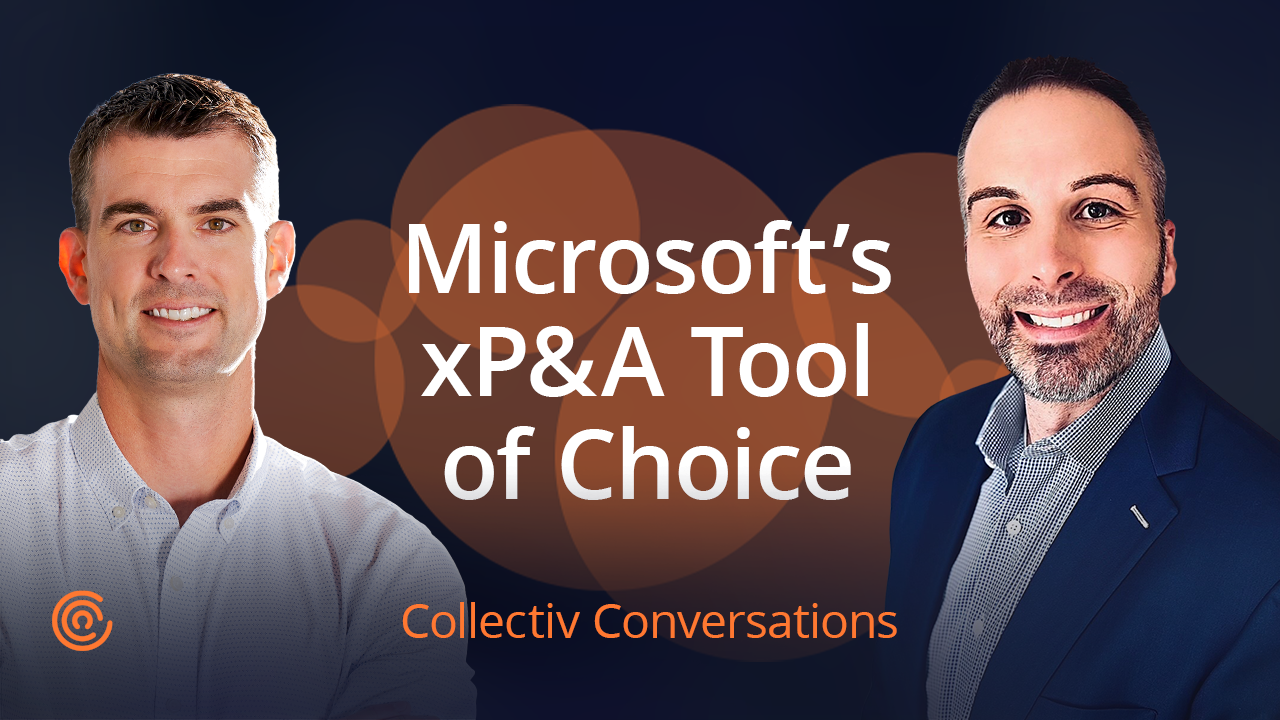Why do so many organizations abandon their budgets halfway through the year? Because the traditional budgeting process is broken.
In the latest episode of Collectiv Conversations, I chatted with Stephen Newland about the future of financial planning and analysis and how we can improve the forecasting and budgeting process.
Stephen is the director of FP&A at GrowthLab Financial, which offers finance-as-a-service for growing businesses. Hope you get a ton of value from these episode takeaways from my recent conversation with Stephen.
Why Traditional Budgeting Is Totally Broken
The traditional budgeting process comes with a variety of challenges, both for your FP&A team and for the organization as a whole. Identifying these challenges is the first step to improving your budgeting process to make it more agile and efficient.
Intensive Budgeting Period
For many FP&A professionals, the hardest thing about budgeting is how intensive and time-consuming the process is. At the end of the year, FP&A professionals often work long hours to complete very complex budgets. Not only is this a very stressful time, but it also takes the finance team away from other projects.
Stakeholder Involvement
Another major challenge that Stephen noted during our conversation was the tension between finance and the rest of the organization when creating budgets.
FP&A teams often have to make very tough decisions during the budgeting process and struggle to get a consensus from leadership before moving forward. While leadership tends to be more hands-on in SMBs than in large enterprises, it’s still very challenging to bring everyone together, especially during busy times of the year.
Overcomplicating the Budget
For many finance professionals, it’s tempting to create a very complex budget, digging into every line item to make sure things are right. However, overcomplicating the process with a rigid, overly detailed budget actually creates more work later on.
Stephen recommends focusing on agility with your budget so that you can adjust quickly and easily as new challenges come up. This might mean working with a shorter budgeting period of a month or 90 days rather than 12 months.
The Evolution Of Forecasting, Planning, and Budgeting
Many FP&A professionals are re-evaluating the way they approach forecasting, planning, and budgeting each year, eschewing traditional methods in favor of more flexible and efficient approaches. Here’s what to keep in mind as your organization transitions to a new budgeting approach.
Get Everyone On The Same Page
To change your budgeting process, you’ll need buy-in from your entire team.
Focus on fostering a collaborative relationship between the finance team and the rest of the organization, rather than dealing with a combative or contentious environment. Open communication will help everyone work together towards a common goal.
Explore Different Budgeting Frameworks
Every organization has different needs when it comes to finance and budgeting, so don’t be afraid to move beyond a traditional budgeting strategy and explore different frameworks.
Stephen often recommends continuous month-by-month budgeting, as it allows more room for movement when things are changing at a rapid pace. Another option is a driver-based budgeting plan. Leadership picks 3-5 driving factors for organizational growth and builds the budget around those factors to steer the company in the right direction.
Allow For Flexibility
As the pandemic taught all of us…business conditions can change in the blink of an eye. Your budget should be flexible enough to adjust for any economic storm that heads your way.
Stephen recommends thinking about a business budget the same way you would think about a personal budget. Focus on general guidelines and goals rather than trying to hit 100% accuracy.
Implement New Technology
Historically, many FP&A teams have been slow to adopt new technology. Today’s finance and reporting tools give FP&A professionals better visibility into the data that they need, which helps them complete budgets more quickly and efficiently.
This gives high-level finance professionals more time to focus on the complex tasks that need their attention. Additionally, modern finance technology offers in-depth analysis tools to provide helpful insights into your budget for future improvements.
Support Younger Team Members
When asked what FP&A teams should focus on in 2023, Stephen recommended focusing on mentoring and supporting younger finance professionals. Nurturing the untapped potential of younger professionals benefits your entire team and brings a fresh new perspective to your budget.
Switching from a traditional budgeting strategy to a more agile approach better prepares your organization for any ups and downs ahead. Stop trying to make a broken process work and focus instead on ways to evolve.
If you enjoyed these takeaways and want to see more of Collectiv Conversations, make sure you subscribe to Collectiv’s YouTube channel.
_____________
Chris Ortega is a Fractional CFO, strategic advisor, and finance influencer with over 17 years of experience in public accounting, corporate accounting, finance, FP&A, and leadership. As the CEO of Fresh FP&A, he helps businesses transform and scale their finance organization.




